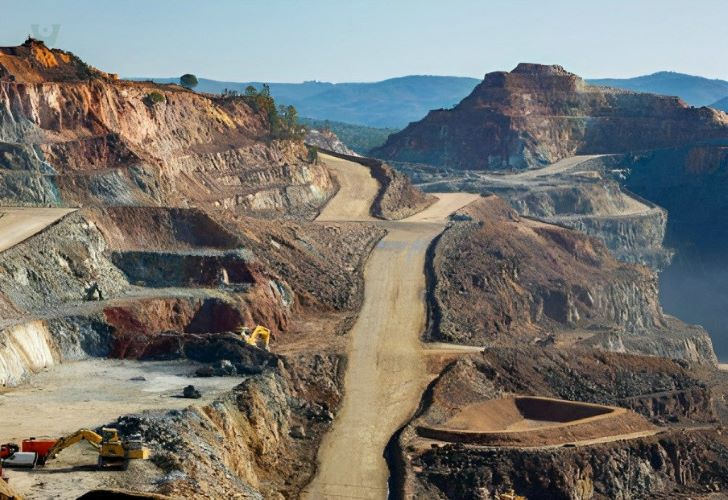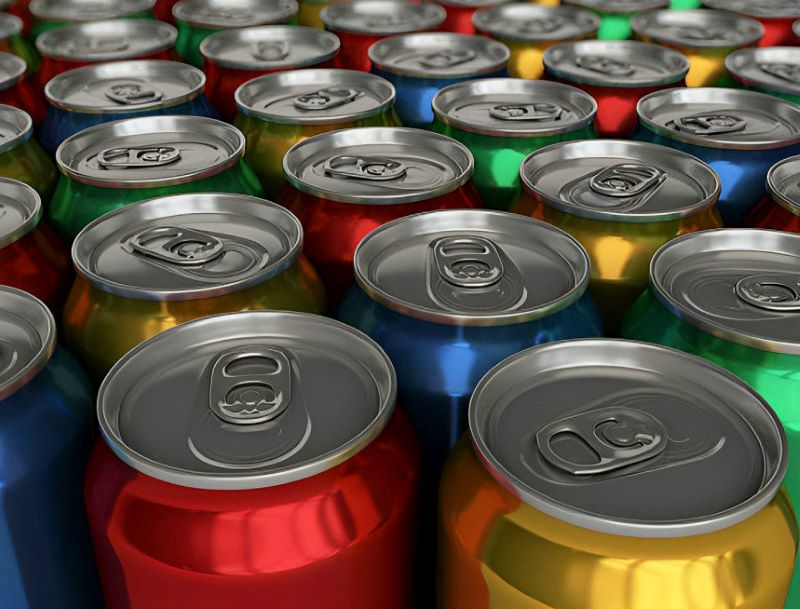Amidst the ongoing discussions about sustainability and the environment, the question of whether copper, one of humanity’s oldest companions, can be counted among renewable resources has begun to emerge. In a world increasingly concerned with the finite nature of many of its most precious materials, it’s only natural to ponder the sustainability of copper. Let’s embark on a journey to uncover the truth and explore the intricate relationship between copper and the concept of renewability. Is copper an everlasting gift from the Earth, or does its extraction and use come at a cost to our planet?
is copper a renewable resource?
Copper is not a renewable resource in the traditional sense of the term.
Copper, on the other hand, is a finite resource that cannot be naturally regenerated within short human timescales. It is a naturally occurring element found within the Earth’s crust, and its formation takes millions of years through geological processes. Once extracted and used, copper does not naturally replenish itself at a rate that can keep up with human consumption.
While recycling copper is common and contributes significantly to reducing the environmental impact of copper mining, it’s important to note that recycling still relies on the initial extraction of virgin copper from ores. In this sense, copper is considered a non-renewable resource.
In the following exploration, we will delve into the significance of copper in our daily lives and navigate the complex discussion surrounding its renewability. By examining its nature, recycling potential, and environmental implications, we aim to shed light on whether copper truly deserves a place among the ranks of renewable resources.
The Nature of Copper
Copper, with its unmistakable reddish-brown hue and exceptional conductivity, is one of the elemental building blocks of our planet. To comprehend whether copper qualifies as a renewable resource, it is essential to first delve into its fundamental nature.

-Alloyours copper alloy manufacturers
Copper Unveiled: Exploring Its Elemental Nature
Copper (Cu) is an elemental metal with a distinct set of chemical properties that make it highly valuable in various applications. As we delve into the nature of copper, it’s crucial to understand that, as an element, copper is a fundamental substance that cannot be broken down into simpler forms through chemical reactions.
Copper exhibits several remarkable characteristics:
- Atomic Structure: Copper's atomic structure includes 29 protons, 29 electrons, and 35 neutrons (in its most common isotope, copper-63). This arrangement gives copper its unique properties.
- Electrical Conductivity: Copper is renowned for its exceptional electrical conductivity, second only to silver. This property makes it invaluable in the electrical and electronics industries.
- Thermal Conductivity: Copper is an excellent conductor of heat, which makes it suitable for applications where efficient heat transfer is essential, like in radiators and heat exchangers.
- Malleability and Ductility: Copper is both malleable (can be hammered into thin sheets) and ductile (can be drawn into thin wires), allowing for various manufacturing processes.
- Corrosion Resistance: Copper has natural corrosion resistance due to the formation of a protective oxide layer, making it durable in many environments.
- Color and Luster: Copper's reddish-brown color and metallic luster contribute to its aesthetic appeal.
Copper, in its pure form, serves as a benchmark for these properties. However, it’s often used in various alloys, combining its unique attributes with those of other elements to tailor its performance for specific applications. Copper’s versatility and essential role in numerous industries underscore its significance in modern society, prompting the exploration of whether it can be considered a renewable resource, even when extensively utilized in various sectors like construction, electronics, and transportation.
Geological processes responsible for copper formation
Copper, as a vital element, originates through complex geological processes deeply embedded within the Earth’s crust. Its formation is intricately tied to the planet’s dynamic geological history.
Copper typically occurs in ore deposits known as porphyry copper deposits and sediment-hosted copper deposits. Porphyry copper deposits are the most common and are often associated with volcanic activity. These deposits develop when magma rich in copper, along with other minerals, rises from the Earth’s mantle. As the magma cools and solidifies beneath the Earth’s surface, it forms large underground chambers. Over time, groundwater laden with copper ions infiltrates these chambers, gradually precipitating copper sulfide minerals.
Sediment-hosted copper deposits, on the other hand, form in sedimentary rock layers. Copper in these deposits primarily originates from the weathering and erosion of copper-rich rocks. The copper is then carried by water and deposited as minerals in favorable geological environments.
The geological processes responsible for copper formation are extensive and take millions of years. This, in part, contributes to the debate over whether copper can be considered a renewable resource. While new copper deposits are continually being formed through geological processes, the timescales involved are far longer than the rates of human extraction and consumption.
In considering copper’s renewability, it’s essential to account for both the geological processes driving its formation and the practical limitations of mining and extraction.
The timescales involved in copper replenishment
The timescales involved in copper replenishment are a critical aspect when evaluating whether copper can be considered a renewable resource. Copper formation and replenishment occur over vast spans of geological time.
- Geological Processes: The formation of new copper deposits primarily relies on geological processes like magmatic activity, weathering, and sedimentation. These processes operate on timescales ranging from hundreds of thousands to millions of years.
- Formation of Ore Bodies: Once copper is formed within the Earth's crust, it can take tens of millions of years for it to accumulate in economically viable ore bodies. The slow deposition and concentration of copper minerals contribute to this extended timescale.
- Human Extraction: In contrast, human extraction of copper occurs at a significantly faster rate. Mining and refining processes can deplete copper resources in a matter of decades or centuries, depending on the scale of mining activities.
- Recycling: Recycling can partially offset the finite nature of copper deposits. However, the recycling process also requires significant energy and resources.
- Sustainability Challenges: Balancing the timescales of copper formation with human consumption poses sustainability challenges. Over-exploitation of copper resources can lead to depletion and ecological disruption.
In summary, while copper is continuously being formed through geological processes, the replenishment rates are far slower than the rates of human consumption. This incongruence raises questions about whether copper can truly be considered a renewable resource in the context of practical usage and sustainability.
what is Renewable Resources?
In order to determine whether copper qualifies as a renewable resource, it’s crucial to establish a clear understanding of renewable resources themselves. In this section, we’ll delve into the definition and key characteristics of renewable resources. Additionally, we’ll explore some prime examples of resources that are renewable in nature, drawing comparisons to the unique case of copper. This foundational knowledge will pave the way for a comprehensive evaluation of copper’s renewable status.

-Alloyours copper alloy manufacturers
Definition and characteristics of renewable resources
Renewable resources are natural materials or sources that have the capacity to regenerate or be naturally replaced over time, typically on a human timescale. Their key characteristics include sustainability, replenishment, and minimal depletion of finite reserves. In contrast to non-renewable resources like fossil fuels, renewable resources are considered environmentally friendly and have a lower ecological impact.
Renewable resources are often categorized into two main types:
- Biological Renewable Resources: These include living organisms or their byproducts, such as forests, fisheries, and agricultural crops. These resources can be harvested sustainably, allowing them to regenerate naturally.
- Inorganic Renewable Resources: These encompass non-living resources like sunlight, wind, and geothermal energy. These resources are continuously available and don't deplete with use.
However, it’s essential for copper alloy manufacturers to emphasize the importance of recycling and responsible resource management to extend the longevity of copper supplies and reduce environmental impacts. Copper recycling and sustainable mining practices play a pivotal role in mitigating resource scarcity and environmental consequences associated with copper extraction.
Examples of renewable resources in contrast to copper
- Solar Energy: Solar energy is derived from the sun and is considered a renewable resource. It's harnessed through photovoltaic cells and solar panels to generate electricity. Unlike copper, which requires mining and refining from finite ore deposits, sunlight is an everlasting and abundant source of energy.
- Wind Energy: Wind turbines harness the kinetic energy of wind to generate electricity. Wind is an atmospheric phenomenon driven by solar heating and the Earth's rotation. Wind energy is renewable because the wind continuously blows, providing an ongoing source of power. Copper is used in the construction of wind turbines, highlighting the synergy between renewable resources and essential materials.
- Hydropower: Hydropower, generated from the flow of water in rivers and dams, is another renewable energy source. The water cycle ensures a constant supply of flowing water, making hydropower a sustainable energy option. Copper is used in the electrical components of hydropower systems.
- Biomass: Biomass energy is derived from organic materials such as wood, crop residues, and waste. These materials can be continually replenished through sustainable forestry and agricultural practices. While copper may be used in the infrastructure of biomass power plants, the primary fuel source itself is renewable.
- Geothermal Energy: Geothermal energy taps into the Earth's internal heat, which is continuously generated by radioactive decay. This resource provides a consistent and renewable source of energy. Copper is utilized in geothermal power plants to transfer and conduct heat.
Notably, while copper itself is not a renewable resource, copper alloy manufacturers its efficient use and recycling contributes to sustainable development and resource conservation. Furthermore, the role of copper in various renewable energy technologies highlights its importance in the transition to a more sustainable and environmentally friendly future.
Recycling Copper for a Sustainable Future
Copper, a vital element in our modern lives, has an interesting dual identity. On one hand, it’s a finite resource, mined from the Earth’s depths. On the other, it’s infinitely recyclable. In this section, we’ll explore the essential role that recycling plays in ensuring the sustainability of copper, examining both its remarkable benefits and the limitations that come with the process.

-Alloyours copper alloy manufacturers
Reviving Copper: The Pivotal Role of Recycling in Sustainability
Copper, a metal deeply ingrained in our lives, plays an integral role in various industries. However, the finite nature of copper resources raises questions about its sustainability. Recycling, a fundamental practice in the copper industry, is the linchpin in ensuring copper’s ecological balance.
Recycling begins with the collection of discarded copper products, ranging from electrical wires to plumbing components. These items are meticulously sorted and processed to extract the valuable copper content. The process includes cleaning, melting, and refining the copper until it reaches the desired purity level.
One of the key advantages of recycling is its significant reduction in the need for fresh copper extraction. This not only conserves finite natural resources but also mitigates the environmental impact of mining operations, which can be ecologically disruptive.
Copper alloy manufacturers play a pivotal role in recycling. They employ advanced techniques to process recycled copper efficiently while maintaining its quality and reliability. These processes are essential for ensuring that recycled copper can meet the rigorous standards required for various applications.
In conclusion, recycling is a cornerstone of copper sustainability. It not only extends the life of this valuable resource but also lessens the environmental footprint associated with its extraction. As we navigate the challenges of resource conservation and environmental responsibility, recycling remains a powerful tool in preserving copper’s vital role in our modern world.
Benefits and limitations of copper recycling
Copper recycling is a pivotal practice with numerous environmental and economic benefits, as well as certain limitations.
Benefits
- Resource Conservation: Copper is not an infinite resource, and mining for new copper ore can have significant environmental impacts. Recycling helps conserve these finite reserves, reducing the need for fresh mining.
- Energy Efficiency: Recycling copper consumes considerably less energy compared to primary copper production. This energy efficiency results in reduced greenhouse gas emissions, contributing to a cleaner environment.
- Reduced Waste: Copper is often used in long-lasting applications like electrical wiring and plumbing. Recycling these items diverts them from landfills, minimizing waste.
- Economic Value: Recycling copper generates economic benefits. It provides a source of income for individuals and businesses engaged in collecting and processing scrap copper. Additionally, the copper industry saves money by using recycled copper, which is often cheaper than newly mined copper.
- Lower Environmental Impact: Mining for copper can lead to deforestation, habitat disruption, and water pollution. Recycling mitigates these harmful effects and helps maintain ecosystem integrity.
Limitations
- Quality Control: Recycled copper may not always meet the stringent quality requirements for certain applications. To address this, copper alloy manufacturers must employ sophisticated processing techniques to ensure the recycled copper's quality matches that of newly mined copper.
- Collection Challenges: Collecting scrap copper can be logistically challenging. It requires efficient collection and sorting mechanisms to gather and separate various copper-containing items.
- Initial Investment: Recycling infrastructure, such as collection centers and processing facilities, requires substantial initial investments. This can be a barrier, particularly in regions with limited resources.
- Energy Costs: While recycling consumes less energy than primary production, it still requires energy for transportation, processing, and refining. Reducing these energy costs further is an ongoing challenge.
- Market Fluctuations: Copper prices can fluctuate based on market demand, affecting the economic viability of recycling operations.
In conclusion, copper recycling offers a multitude of benefits, from resource conservation to reduced environmental impacts. However, it also faces challenges related to quality control, logistics, and economic factors. Overcoming these limitations is essential for maximizing the positive impact of copper recycling on both industry and the environment.
Copper as a Non-Renewable Resource
While copper plays a vital role in various industries and our daily lives, it falls into the category of non-renewable resources due to several compelling reasons. This section explores these arguments and delves into the environmental concerns surrounding copper extraction.

-Alloyours copper alloy manufacturers
Arguments Against Considering Copper as Renewable
- Finite Reserves: Copper exists naturally in the Earth's crust, but it's not an infinitely replenishing resource. Geological processes take millions of years to form copper deposits, making it impossible for copper to renew on a timescale relevant to human activity.
- Extraction Rates: Human and copper alloy manufacturers demand for copper far outpaces the rate at which it forms geologically. Mining operations extract copper at a much faster rate than it can naturally accumulate, depleting known reserves.
- Energy-Intensive Production: Copper production, from mining to refining, is energy-intensive. Copper alloy manufacturers extracte and process copper ore consumes substantial energy, contributing to greenhouse gas emissions.
- Environmental Impact: Copper mining often involves habitat disruption, deforestation, and water pollution. These environmental consequences highlight the finite nature of copper resources and their impact on ecosystems.
- Recycling Dependency: While recycling can extend the life cycle of copper, it relies on a finite supply of existing copper products. If copper alloy manufacturers not for the recycling of older copper items, the scarcity issue would become even more pronounced.
Environmental Concerns Related to Copper Extraction
- Habitat Destruction: Open-pit mining, a common method for extracting copper, can result in extensive habitat destruction and fragmentation. This affects local ecosystems and wildlife.
- Water Pollution: Copper mining can release harmful chemicals into waterways, impacting aquatic life and posing health risks to nearby communities.
- Deforestation: Mining operations often require clearing large tracts of land, leading to deforestation and loss of biodiversity.
- Greenhouse Gas Emissions: Copper extraction and processing contribute to greenhouse gas emissions, exacerbating climate change.
- Resource Depletion: Over time, the depletion of copper reserves can lead to higher extraction costs and greater environmental damage as mining operations extend to less accessible and more environmentally sensitive areas.
In conclusion, while copper is an essential material in our modern world, it cannot be considered a renewable resource. Its finite nature, rapid extraction rates, energy-intensive production, and significant environmental impact all underscore the non-renewable status of copper. These factors highlight the importance of responsible mining practices and increased efforts for copper alloy manufacturers in copper recycling to mitigate the environmental consequences of its extraction.
conclusion
In our exploration of copper’s status as a resource, we’ve unequivocally established that copper is a non-renewable material. Its finite geological formation, rapid extraction rates, energy-intensive production, and consequential environmental impacts leave no room for ambiguity. Copper is a resource with limits.
However, acknowledging this fact is only the first step. The enduring importance of copper in countless applications necessitates a responsible approach to its extraction and use. It’s imperative that we recognize the significance of:
1. Responsible Mining: Mining companies must adopt practices that minimize habitat disruption, reduce pollution, and promote ecological restoration. Sustainable mining not only extends the life of existing copper reserves but also safeguards the environments that host these resources.
2. Recycling Efforts: Recycling plays a pivotal role in copper sustainability. Extending the life cycle of copper through recycling reduces the need for new mining and lowers energy consumption. Increased awareness and investment for copper alloy manufacturers in recycling initiatives are essential for conserving this valuable resource.
In conclusion, copper’s non-renewable status does not diminish its significance in our lives. Instead, it underscores the need for a concerted effort to manage this resource responsibly. By prioritizing sustainable mining practices and embracing copper recycling, copper alloy manufacturers can ensure that this versatile metal continues to serve our technological, industrial, and societal needs while minimizing its environmental impact. The future of copper lies in our hands, and responsible stewardship is the key to preserving its enduring value.







